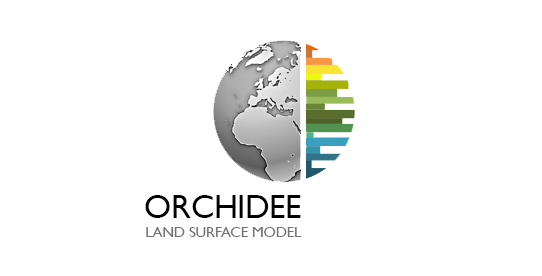ORCHIDEE_MICT-PEAT-CH4 r 7020
This version of ORCHIDEE has been used in ORCHIDEE MICT-PEAT-CH4, a global model for the production, transport and transformation of CH4 from northern peatlands by Elodie Salmon, Fabrice Jégou, Bertrand Guenet, Line Jourdain, Chunjing Qiu, Vladislav Bastrikov, Christophe Guimbaud, Dan Zhu, Philippe Ciais, Philippe Peylin, Sébastien Gogo, Fatima Laggoun-Défarge. 2021. Assess methane emissions for northern peatlands in ORCHIDEE-PEAT revision 7020. Submitted to Geoscientific Model Development.
Abstract
In the troposphere and the stratosphere methane interacts with many chemical components and infrared irradiations involving significant feedbacks on climate. In the global methane budget, the largest natural source is attributed to wetlands that encompass all ecosystems composed of a saturated or inundated ground capable of methane production. Among them, northern peatlands that store large amount of soil organic carbon have been functioning, since the end of the last glaciation period, as long-term sources of methane (CH4) and is one of the most significant methane sources among wetlands. To reduced global methane budget uncertainties, it is of significance to understand processing driving methane production and fluxes in northern peatlands and feedbacks on climate. This can be achieved employing Earth system models (ESM) that evaluate future climate changes. Therefore, recent development of ORCHIDEE land surface model (ORC-PEAT) lead to include peat carbon decomposition controlled by soil water content and temperature as well as carbon dioxide (CO2) production and consumption processes. In addition, a methane model that features methane production and transport by plants, ebullition process and diffusion in soil, oxidation to CO2 and CH4 fluxes to the atmosphere has been embedded in the most recent version of ORC-PEAT and is detailed here. This model, ORC-PCH4 was calibrated and evaluated on 14 peatland sites distributed on both Eurasian and American continents in the northern boreal and temperate regions (from 41°N to 69°N). Data assimilation approaches were employed to optimized parameters at each site and at all sites simultaneously. Results show that, in ORC-PCH4, methanogenesis is sensitive to temperature and substrate availability over the top 75cm of soil depth. Methane emissions estimated using single site optimization (SSO) of model parameters are underestimated in average of 10 g CH4 m-2 year-1. While using the multi-sites optimization (MSO), methane emissions are overestimated by 7 g CH4 m-2 year-1 in average across sites.
Code access
- See the version on the webinterface here : https://forge.ipsl.fr/orchidee/browser/branches/publications/ORCHIDEE_gmd_mict_peat_ch4
- Extract it on a terminal as follow, type anonymous as password:
svn co --username anonymous svn://forge.ipsl.fr/orchidee/branches/publications/ORCHIDEE_gmd_mict_peat_ch4 ORCHIDEE
Metadata
| DOI | 10.14768/d385219a-787a-439c-b128-2e2d30a21f87 |
| Creator | Elodie Salmon |
| Affiliation | LSCE CEA/IPSL/CNRS/UVSQ and LPC2E CNRS/Univ. Orléans |
| Title | ORCHIDEE_MICT-PEAT-CH4 revision 7020 |
| Publisher | Institut Pierre Simon Laplace (IPSL) |
| PublicationYear | 2021 |
| ResourceType | Software |
| Rights | This software is distributed under the CeCILL license |
| rightsURI | http://www.cecill.info/ |
| Subject | Land surface model, Permafrost, Dissolved Organic Carbon, Arctic Rivers |
| DataManager | Karim Ramage (IPSL) |
| DataCurator | Josefine Ghattas (IPSL) |
| ContactPerson | Elodie Salmon (LSCE CEA/IPSL/CNRS/UVSQ) |
| FundingReference | Union Horizon 2020 Project CRESCENDO under contract 641816 and Labex VOLTAIRE ANR-10-LABX-100-01 |
